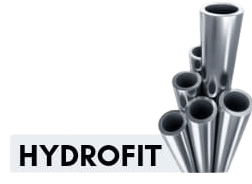+91-79045 61980 | Located in Chennai, TN
Seamless Tubes Manufacturing Process

The seamless tubes manufacturing process is a careful and detailed process. It needs skill, proper temperature control and accurate machines. The aim is to make high-quality hollow pipes without any welded joint or seam. These seamless tubes are used in many industries like oil and gas, automobile, power plant, and construction.
1. Selection of Raw Material
The first and very important step is choosing the right raw material. Mostly, seamless tubes manufacturing process involves steel, which can be of many types like carbon steel, stainless steel or alloy steel. The choice depends on how and where the pipe will be used.
Steel is usually supplied in the form of solid round bars or billets.
These billets are first checked properly to ensure they are free from cracks or other defects. The chemical composition and strength of the steel are also tested. Good quality raw material gives strong and long-lasting pipes.
2. Heating and Piercing
After selecting the billets, they are heated in a furnace until the metal becomes soft and ready to shape. This step is called billet heating. The heating temperature depends on the type of steel and the required pipe size.
Once heated, a pointed tool called a mandrel is pushed through the center of the billet to make a hollow shape. This step is known as piercing. It helps to form the basic shape of the tube and gives a smooth inner surface.
There are few methods used for piercing, like rotary piercing, where the billet is rotated while the mandrel pierces it, and the Mannesmann process, where the billet is pierced and then rolled to elongate it further.
3. Elongation and Reduction
After piercing, the hollow piece is stretched and reduced in diameter to make it longer and thinner. It passes through different rolling stands that help to control the thickness and outer size of the pipe.
During this stage, the inner grain of the steel gets finer, which improves the pipe’s strength and surface finish. The process also makes the wall thickness uniform, which is very important for high-pressure applications.
4. Sizing Process
In this step, the tube is given its exact size and proper round shape. The pipe passes through sizing rolls that control the outer diameter and give a smooth finish.
This step is necessary because different industries need pipes of exact measurements. The sizing also removes small defects formed in the earlier stages and gives a clean surface.
Heat Treatment (Important part of Seamless Tubes Manufacturing Process)
To improve the mechanical properties of the pipe, heat treatment is done. This process helps to make the metal strong, flexible and stress-free. It includes different methods like normalizing, annealing, quenching and tempering.
-
In normalizing, the pipe is heated and cooled in air to make the structure uniform.
-
Annealing is done to make the pipe softer and easier to machine.
-
Quenching and tempering improve both hardness and toughness by heating, cooling and reheating in a controlled way.
The type of heat treatment depends on the kind of steel used and the performance required in the final product.
Testing and Inspection
Quality testing is one of the most important parts of the manufacturing process. Each tube is checked carefully to make sure it meets the required standard.
Different tests are done like ultrasonic test to find inner defects, eddy current test for surface flaws, and hydrostatic test to check for leaks. Dimensional inspection is also done to confirm the correct size and thickness.
Apart from these, visual checking is carried out to ensure there are no cracks or rough surfaces. Chemical and mechanical tests are performed to verify the steel’s composition and strength. Only pipes that pass all tests are sent ahead for finishing.
Cutting and Finishing
After the tubes pass all quality tests, they are cut into required lengths using special saws. The ends are then faced and made smooth. Sharp edges and burrs are removed to make handling safe.
Sometimes, the pipe surface is polished or coated to increase corrosion resistance and improve appearance. These finishing touches make the tubes ready for use in different industries.
Final Inspection and Packaging
Before delivery, one final inspection is done to confirm the tube’s quality and accuracy. Each pipe is checked for measurement, surface finish and marking.
After inspection, the tubes are bundled and packed properly to prevent damage during transport. The packaging depends on the tube size, length and customer requirement.
Shipping and Distribution
Once everything is ready, the finished seamless tubes are sent to customers by truck, rail or ship. Some orders are urgent and may even go by air. Manufacturers coordinate with logistics partners to make sure the tubes reach safely and on time.
Seamless tube manufacturing is a long process that combines heat, precision and inspection at every stage. The result is a strong, reliable and perfectly shaped tube that can work safely under high pressure and temperature in any industrial use.



![Hydraulic Seamless Pipe Grade [And Materials] 6 Hydraulic Seamless Pipe Grade](https://mlfkxaygshwm.i.optimole.com/w:896/h:470/q:mauto/f:best/https://hydraulicpipes.in/wp-content/uploads/2023/09/image-6.jpg)

